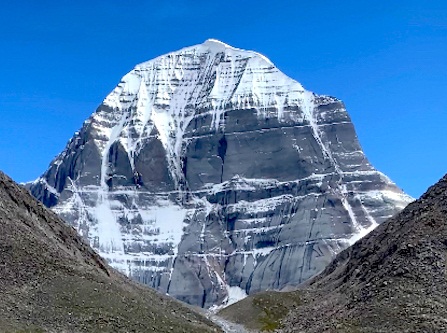Entertainment
Inspiring Generations: The Legacy of Sir David Attenborough
Sir David Attenborough stands as a towering figure in the realm of natural history and conservation, his name synonymous with the exploration and preservation of our planet’s biodiversity. With a career spanning over seven decades, Dr. Attenborough has not only educated and inspired millions through his documentaries but has also catalyzed global awareness about environmental issues. Let us delve into the remarkable journey and enduring impact of this pioneering naturalist.
Early Life and Career Beginnings
Born on May 8, 1926, in Isleworth, London, David Attenborough’s fascination with nature blossomed during childhood explorations in the backyard and at the local zoo. His academic pursuits in natural sciences at Clare College, Cambridge, laid the foundation for a career that would redefine nature filmmaking.
The Evolution of Natural History Filmmaking
Dr. Attenborough’s career took flight in the 1950s when he joined the BBC as a producer. His early groundbreaking series, such as “Zoo Quest,” captured audiences with unprecedented glimpses into remote and exotic habitats. This marked the beginning of a journey that would see him bring the wonders of the natural world into living rooms worldwide.

Narrating Nature’s Story
One of Sir David Attenborough’s most distinctive contributions is his voice—literally and figuratively—in narrating the wonders of the natural world. His soothing, authoritative narration style has become iconic, guiding viewers through the intricate ecosystems and behaviors of diverse species across the globe.
Environmental Advocacy and Conservation Efforts
Beyond documenting nature’s marvels, Dr. Attenborough has been an outspoken advocate for conservation. His documentaries, such as “Planet Earth” and “Blue Planet,” have shed light on the impact of human activities on the environment, from climate change to plastic pollution in our oceans. His efforts have not only raised awareness but have also influenced policies and spurred global movements towards sustainability.
Awards and Recognition
Sir David Attenborough’s contributions have garnered widespread acclaim and numerous accolades, including multiple BAFTA awards, Emmy awards, and the prestigious Order of Merit from the British monarch. His influence extends far beyond entertainment, shaping public perception and policy on critical environmental issues.

Legacy and Future Impact
As Dr. Attenborough enters his tenth decade, his dedication to preserving Earth’s biodiversity remains undiminished. Through initiatives like the David Attenborough Conservation Trust and collaborations with conservation organizations, he continues to inspire action and foster stewardship of our natural world among future generations.
Conclusion
Sir David Attenborough’s legacy is one of unparalleled storytelling, scientific rigor, and unwavering advocacy for the planet and its inhabitants. His ability to bridge the gap between scientific knowledge and public understanding has made him a global ambassador for nature. As we reflect on his life’s work, we are reminded of the urgent need to protect and cherish our natural heritage. Dr. Attenborough’s journey is a testament to the trans formative power of passion, curiosity, and a deep-seated respect for the wonders of the natural world.
The Impact of Excess Caffeine Consumption on Health: Understanding the Risks
In today’s fast-paced world, caffeine has become a ubiquitous companion for many, helping to kick-start mornings and keep energy levels up throughout the day. Found naturally in coffee beans, tea leaves, and cacao, caffeine is also added to many beverages and snacks. While moderate consumption can provide a temporary boost in alertness and concentration, excessive intake can lead to a range of health issues. Understanding these risks is crucial for maintaining a balanced and healthy lifestyle.
How Much is Too Much?
The tolerance to caffeine varies from person to person, but generally, moderate consumption is considered safe for most adults. The Mayo Clinic suggests that up to 400 milligrams (mg) of caffeine per day, roughly the amount in four cups of brewed coffee, is unlikely to cause any harm for healthy adults. However, exceeding this limit or consuming caffeine late in the day can disrupt sleep patterns, leading to insomnia or poor-quality sleep.
Physical Effects of Excess Caffeine
- Cardiovascular Issues: Overconsumption of caffeine can lead to increased heart rate, palpitations, and elevated blood pressure. These effects can be more pronounced in individuals who are sensitive to caffeine or have pre-existing heart conditions.
- Digestive Problems: Caffeine stimulates the production of stomach acid, which can exacerbate acid reflux or lead to gastrointestinal discomfort, including stomach cramps and diarrhea.
- Muscle Tremors and Nervousness: High doses of caffeine can cause jitteriness, anxiety, and even panic attacks in susceptible individuals. It can also lead to muscle tremors and restlessness.

Long-Term Health Risks
- Dependency and Withdrawal: Regular consumption of large amounts of caffeine can lead to dependence, where individuals experience withdrawal symptoms such as headaches, irritability, and fatigue when caffeine intake is reduced.
- Bone Health: Excessive caffeine intake has been linked to reduced calcium absorption, which could potentially weaken bones over time, increasing the risk of osteoporosis.
- Reproductive Health: High levels of caffeine consumption have been associated with fertility issues in both men and women. In pregnant women, it may increase the risk of miscarriage or low birth weight.
Psychological Impact
Beyond physical health, excessive caffeine consumption can also affect mental well-being. It can exacerbate anxiety disorders and contribute to feelings of nervousness or agitation. In some cases, it may impair judgment and exacerbate symptoms of certain psychiatric conditions.
Finding Balance
For those who enjoy caffeinated beverages, moderation is key. Monitoring daily intake and being mindful of the sources of caffeine can help prevent overconsumption. Alternating caffeinated drinks with water or herbal teas can also reduce overall intake while staying hydrated.
Conclusion
While caffeine can offer short-term benefits, particularly in enhancing alertness and focus, excessive consumption poses significant health risks. From cardiovascular issues to digestive discomfort and potential long-term effects on bone health and fertility, the impacts of over consumption should not be underestimated. Maintaining a balanced approach to caffeine intake is essential for safeguarding both physical and mental well-being. By being aware of personal limits and choosing moderation, individuals can enjoy the benefits of caffeine without compromising their health.
The Looming Threat: Understanding the Global Water Crisis
In an era marked by technological marvels and scientific breakthroughs, there exists a silent crisis that threatens the very foundation of human existence: the global water crisis. Across continents, from bustling cities to remote villages, the availability of clean, potable water is dwindling at an alarming rate, presenting one of the most pressing challenges of our time.
The Escalating Challenge
The severity of the water crisis is underscored by staggering statistics. According to the United Nations, more than 2 billion people worldwide lack access to safe drinking water, while 4.5 billion lack safely managed sanitation services. These numbers paint a grim reality where basic human needs are unmet, leading to widespread health issues and societal instability.
Root Causes and Complexities
The causes of the water crisis are multifaceted, intertwining environmental, economic, and political factors. Climate change disrupts weather patterns, leading to droughts and erratic rainfall, exacerbating water scarcity in already vulnerable regions. Rapid urbanization strains existing water infrastructure, often unable to keep pace with burgeoning populations. Moreover, pollution from industrial effluents and agricultural runoff further contaminates freshwater sources, rendering them unsafe for consumption.

Impact on Human Health and Development
The consequences of water scarcity ripple through communities, affecting health, education, and economic opportunities. In regions where clean water is scarce, children often fall ill from waterborne diseases, leading to absenteeism from school and perpetuating cycles of poverty. Women and girls, predominantly responsible for water collection in many cultures, spend hours each day fetching water, time that could otherwise be spent on education or income-generating activities.
Environmental Degradation and Ecosystems
Beyond human impact, the water crisis threatens biodiversity and ecological balance. Depleted rivers and aquifers disrupt aquatic habitats and compromise ecosystems that depend on consistent water flows. Reduced water availability amplifies competition among sectors like agriculture, industry, and municipalities, intensifying conflicts over scarce resources.

Strategies for Mitigation and Sustainability
Addressing the water crisis demands a coordinated approach on local, national, and international levels. Investment in water infrastructure, including improved sanitation systems and efficient irrigation technologies, is critical to enhancing water access and reducing wastage. Promoting water conservation practices through public awareness campaigns and policy incentives encourages responsible water use across all sectors.
Global Cooperation and Policy Frameworks
International cooperation is indispensable in tackling the water crisis, transcending borders to manage shared water resources equitably. Treaties and agreements on transboundary rivers and aquifers foster collaboration among nations, promoting sustainable water management practices and conflict resolution mechanisms.

The Imperative for Individual Action
While governments and organizations play pivotal roles, individual actions also contribute significantly to alleviating the water crisis. Simple measures like fixing leaks, using water-efficient appliances, and reducing personal water consumption collectively reduce strain on local water supplies and contribute to broader conservation efforts.
Looking Ahead: A Call to Action
The water crisis is not an abstract concept but a stark reality affecting billions worldwide. As custodians of this planet, we bear a collective responsibility to safeguard water resources for current and future generations. By prioritizing sustainable water management, advocating for equitable access, and embracing innovation, we can mitigate the water crisis and build a more resilient and water-secure world.
In conclusion, the global water crisis transcends geographical boundaries and socioeconomic divides, requiring unified action and unwavering commitment to ensure water security for all. It is not merely an environmental or developmental issue but a fundamental human right that must be upheld to forge a sustainable future.
Facts about mount kailashDiscovering Mount Kailash: A Sacred Mountain of Mystical SignificanceFacts about mount kailash
Mount Kailash, standing tall in the remote western Tibetan plateau, holds a place of profound reverence and mystique in various religious and cultural traditions. Revered as a sacred site by Hindus, Buddhists, Jains, and Bon followers alike, this majestic peak draws pilgrims and adventurers from around the globe. Here, we delve into the fascinating facts and spiritual significance surrounding Mount Kailash.
Geological and Physical Features
- Location and Altitude: Mount Kailash is situated in the Kailash Range, part of the Transhimalaya in Tibet, China. It reaches an impressive altitude of 6,638 meters (21,778 feet), making it one of the highest peaks in the region.
- Distinctive Shape: The mountain is notable for its unique symmetrical pyramid shape with four distinct faces, each facing the cardinal directions: north, south, east, and west. This geomorphological feature adds to its spiritual allure.
Cultural and Spiritual Significance
- Hindu Beliefs: In Hinduism, Mount Kailash is considered the abode of Lord Shiva, one of the principal deities of the faith. It is believed that Shiva resides atop the mountain in a state of perpetual meditation.
- Buddhist Tradition: For Buddhists, Mount Kailash is associated with Guru Rinpoche (Padmasambhava), credited with introducing Buddhism to Tibet. It is also seen as a representation of Mount Meru, the cosmic axis and center of the universe in Buddhist cosmology.
- Jain and Bon Perspectives: Followers of Jainism consider Mount Kailash to be the site where their first Tirthankara, Rishabhadeva, attained enlightenment. Similarly, the Bon religion of Tibet regards Kailash as the seat of spiritual power and the dwelling place of their deity, Shenrab Miwo.

Mount Kailash
Pilgrimage and Ritual Circumambulation (Kora)
- Circumambulation (Kora): One of the most sacred rituals associated with Mount Kailash is the circumambulation (kora) of the mountain. Pilgrims of various faiths undertake the challenging trek, walking clockwise around the base of the mountain, which spans approximately 52 kilometers (32 miles).
- Importance of Cleanliness: Devotees and pilgrims observe strict cleanliness rituals before embarking on the kora, such as bathing in the nearby Lake Manasarovar and wearing clean clothes, as a sign of respect and purification.
Natural and Ecological Significance
- Lake Manasarovar: Adjacent to Mount Kailash lies Lake Manasarovar, considered one of the holiest lakes in Hinduism and Buddhism. Pilgrims often perform rituals and take dips in its sacred waters before or after completing the kora.
- Wildlife and Conservation: The region around Mount Kailash is home to diverse wildlife, including Tibetan antelope, wild yak, and various bird species. Efforts are underway to preserve the delicate ecosystem and protect the natural beauty of the area.
Conclusion
Mount Kailash stands not only as a geological marvel but also as a spiritual beacon, drawing people of diverse faiths to its majestic slopes. Its significance transcends borders and beliefs, offering a profound glimpse into the interconnectedness of humanity’s spiritual heritage. Whether one seeks adventure, enlightenment, or simply a deeper understanding of cultural diversity, Mount Kailash continues to inspire and captivate those who venture to its sacred heights.
Trailblazer of Holistic Healing: The Inspiring Journey of Gladys McGarey
Pioneering Holistic Medicine: The Legacy of Gladys McGarey
Gladys Taylor McGarey, often referred to as the “Mother of Holistic Medicine,” stands as a pioneering figure in the realm of healthcare. Born in 1920, her life’s work has been dedicated to integrating conventional medicine with alternative healing practices, advocating for a more comprehensive approach to wellness. Let’s explore the remarkable journey and contributions of this trailblazing physician.
Early Life and Education
Gladys McGarey’s journey began in Arizona, where she was born and raised. She pursued her medical education at the University of Arizona, earning her degree in 1944. This early foundation in traditional medicine would later intersect with her profound interest in holistic healing modalities.

Gladys McGarey
Trailblazing Holistic Medicine
Dr. McGarey’s career took a pivotal turn when she co-founded the American Holistic Medical Association (AHMA) in 1978, alongside a group of like-minded physicians. This organization aimed to promote a holistic approach to healthcare, emphasizing the importance of treating the whole person rather than just symptoms. McGarey’s leadership within the AHMA helped to legitimize holistic medicine within the medical community and beyond.
Contributions to Integrative Medicine
Central to McGarey’s philosophy is the belief that true healing encompasses physical, emotional, and spiritual dimensions. She integrated various alternative therapies such as acupuncture, nutrition, and mind-body techniques into her practice, paving the way for what is now known as integrative medicine. Her innovative approach has influenced countless practitioners and patients alike, fostering a more holistic understanding of health and wellness.
Legacy and Influence
Beyond her role in founding the AHMA, McGarey has authored several books, including “The Physician Within You” and “Born to Live,” which have inspired readers to take a more active role in their own health. Her lectures and workshops have further disseminated the principles of holistic medicine, reaching audiences worldwide.
Continuing Impact
Even in her later years, Gladys McGarey remains an influential figure in the field of integrative and holistic medicine. Her advocacy for patient-centered care and the integration of complementary therapies continues to shape medical education and practice. Her legacy serves as a beacon for those seeking a more comprehensive approach to healing and well-being.
Conclusion
Gladys Taylor McGarey’s pioneering spirit and dedication to holistic medicine have left an indelible mark on the healthcare landscape. Through her tireless efforts, she has challenged conventional medical paradigms and championed a more inclusive approach to health and healing. As we continue to explore the potential of integrative medicine, we acknowledge Dr. McGarey’s profound influence and celebrate her enduring legacy in shaping a more holistic future for healthcare worldwide.





